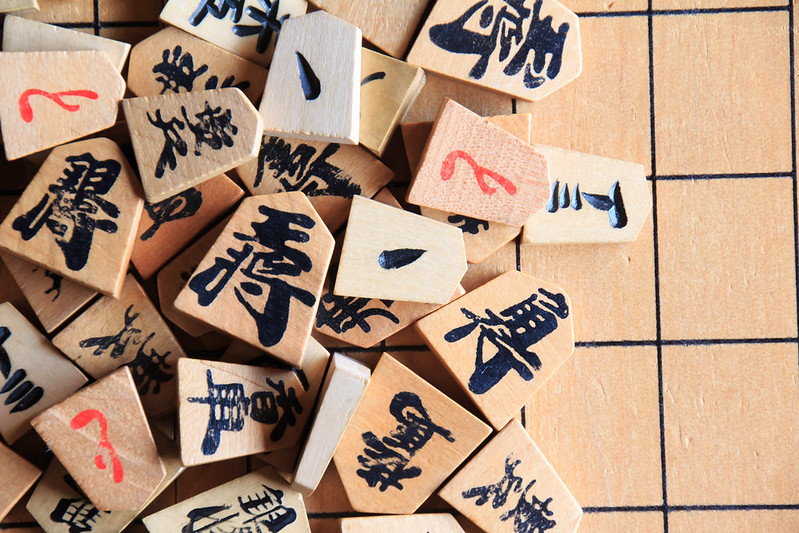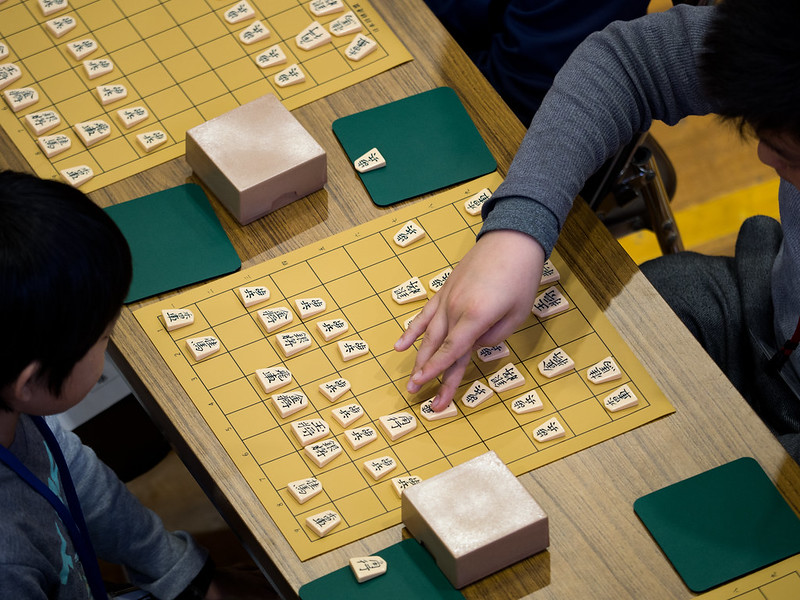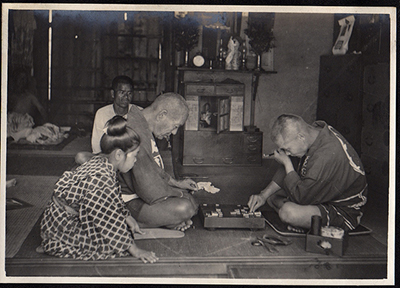
Shogi: Japanese Chess
Shogi (将棋), also known as the Generals’ Game, is a two-player strategy board game, probably the most popular native variant of chess in Japan. The Japanese city, Tendo, is known for producing shogi pieces since the Edo period—this is the traditional local craft in the area. The Ningen shogi or human shogi is a popular spring event when armored or kimono-clad people act as shogi pieces.
The history of shogi and how it first arrived in Japan is not entirely clear. From the Song Dynasty through the Ming Dynasty in China, there are stories that numerous trade convoys travelled along the southern islands and all around the Indian Ocean. They traded with Japan and other South Asian countries that could have influenced the development of shogi.
Japanese Shogi Convention.
The oldest documents that tell us of the existence of shogi is found in the seven-volume writings by Fujiwara Yukinari (972 – 1027), the Kirinshō. The writings describe how to write the characters used for shogi pieces. Another piece of written documentation, the Shin Saru Gakuki (written sometime between 1058 to 1064 by Fujiwara Akihira), also contains passages describing shogi. The earliest archeological evidence of shogi was excavated from Kōfuku-ji in Nara Prefecture, where 16 wooden shogi pieces were found along with a wooden writing plaque dating back to 1058, indicating that the shogi pieces were of the same period. The pieces found also had a five-sided shape, were cut from a wooden writing plaque, and the symbols were written directly on the surface.
Modern shogi (hon shogi), like the Japanese game go, was approved by the Tokugawa shogunate in a law giving endowments to shogi players and their families, iemoto (a system of familial generations in traditional Japanese arts), and giving themselves the title shogi-dokoro (places of shogi). Early known shogi playes were Kanō Sansa and Ōhashi Shūkei.
Playing shogi in Japan between 1916 and 1918. | A. Davey
During the reign of the eighth shogun of Japan, Tokugawa Yoshimune, the castle shogi tournament was held each year on the 17th day of Kannazuki. The corresponding day in the modern calendar would be the 17th of November and was designated as Shogi Day in Japan. During this time, the Meijin were the iemotos of shogi and were the ones responsible for the endowments. Over the course of the shogunate’s reign, the title meijin became the hereditary title of the Ōhashi family and the Itō family. Even today, the winner of the shogi competition is given this title. It is a tradition, now, for anyone who inherits the title of meijin to present a collection of shogi puzzles to the shogunate government.
